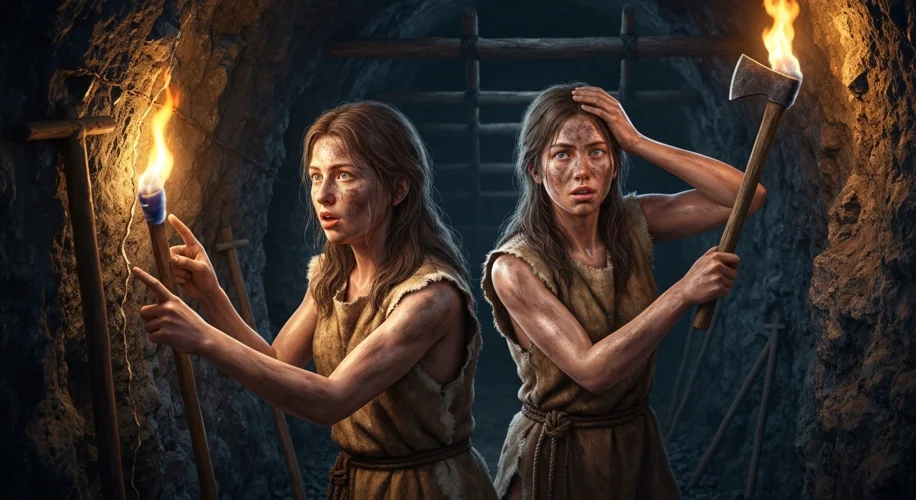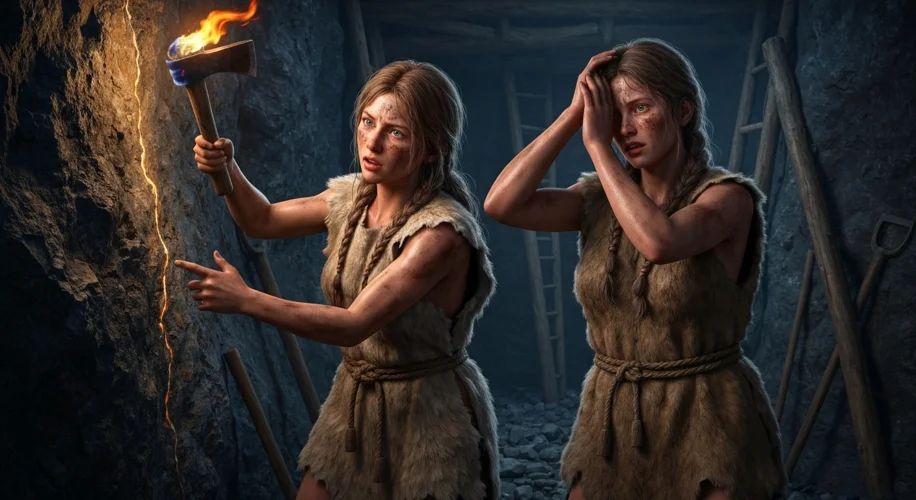Imagine the scene: : a world shrouded in the mists of time, 6,000 years ago. The Czech Republic, a land now known for its charming cities and rolling hills, was then a frontier of human endeavor. Here, deep within the earth, two sisters, their names lost to the ages, toiled in the brutal, unforgiving darkness of a mine. Their story, brought to life through hyperrealistic reconstructions, offers a rare glimpse into the harsh realities and societal structures of the Neolithic period.
The air hung heavy with the scent of damp earth and exertion. These weren’t warriors or chieftains whose deeds were etched in stone, but ordinary women engaged in an extraordinary task – mining precious minerals. Archaeological discoveries at sites like the famous Rudná hora (Silver Mountain) near Třebíč have unearthed evidence of extensive Neolithic mining operations, revealing a sophisticated understanding of geology and metallurgy far beyond what was once imagined for this era.
The Neolithic, or New Stone Age, marked a pivotal transition in human history. It was a time when communities began to settle, agriculture flourished, and the first complex societies emerged. Yet, beneath the veneer of progress, life was often a struggle for survival. For these sisters, their existence was defined by the rhythm of the pickaxe, the ache in their muscles, and the ever-present danger of cave-ins. They likely belonged to the Lengyel culture, known for its advanced pottery and communal living, but their specific roles within this society are illuminated by these mining finds.

The key actors in this story are, of course, the sisters themselves. What motivated them? Were they driven by necessity, contributing to their community’s survival and prosperity? Or was mining a specialized role, perhaps one that offered a degree of status or autonomy? Evidence suggests that women played vital roles in Neolithic societies, from farming and crafting to gathering and, as we now know, mining. Their perspective, though silent, speaks volumes about resilience and adaptation.
The event itself wasn’t a single cataclysmic moment, but the daily grind of extracting resources. The tools they used were rudimentary – stone axes, bone picks, and perhaps even rudimentary wooden levers. The minerals they sought were likely malachite or copper, crucial for creating ornaments and early metal tools, signifying a growing understanding of material properties and trade networks. The mine itself was likely a network of shallow shafts and tunnels, dug by hand, a testament to sheer human will.
The consequences of this mining were far-reaching. It provided the raw materials that fueled technological advancement, enabling the creation of more durable tools, weapons, and decorative items. This, in turn, likely fostered trade and social complexity within and between communities. The very act of mining represented a significant investment of labor and risk, suggesting a level of social organization capable of coordinating such efforts. These early miners were the unsung pioneers of industry.
Analyzing these findings, we can interpret the lives of these sisters not just as a tale of hardship, but as a narrative of human ingenuity and cooperation. They were integral threads in the fabric of their society, their labor contributing to its growth and development. Little did they know that their efforts, deep in the earth, would echo through millennia, offering us a profound connection to our distant ancestors. Their story reminds us that history is not just about kings and battles, but about the quiet, persistent efforts of ordinary people who shaped the world we inhabit today.

